Monarch Butterfly: What is Citizen Science?
Citizen Science is the collection of scientific data by individuals who are not professional scientists. Professional biologists from the land management agency prepare the individuals for their work as citizen scientists. These projects are on-going and consist of a network of volunteers. Citizen Science networks are very important. The citizen science monitoring programs would not be the success it is without the participation of citizen scientists. Without these dedicated volunteers, too few data would be collected to accomplish research objectives. Much of what has been learned about the monarch butterfly and its migration is the result of citizen science projects.
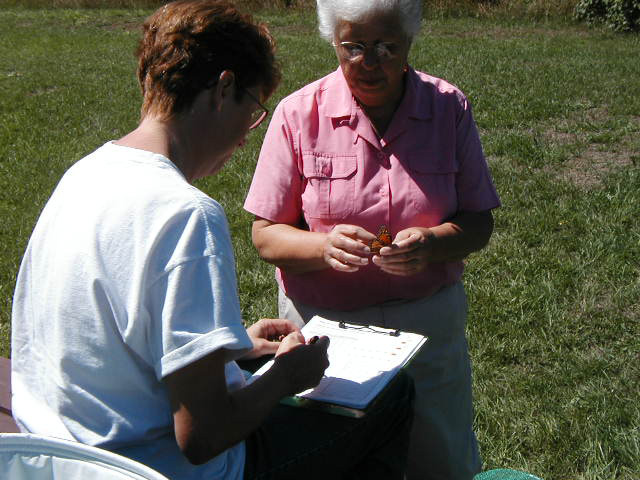 Two volunteers record data on a monarch butterfly they recently tagged. Photo by Anne Okonek.
Two volunteers record data on a monarch butterfly they recently tagged. Photo by Anne Okonek.
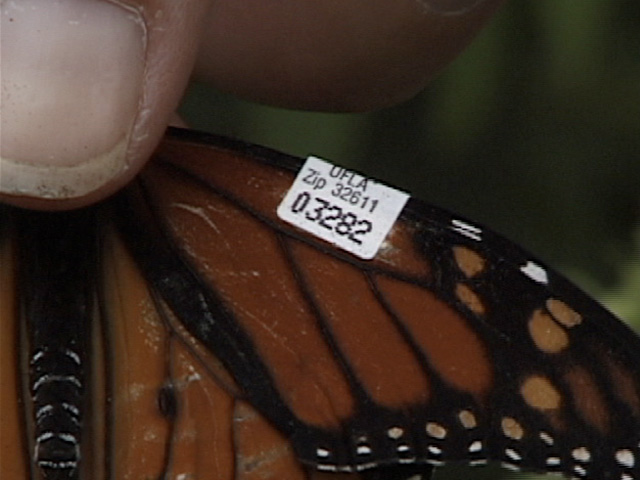 Tagged monarch butterfly. Photo by Dick Walton.
Tagged monarch butterfly. Photo by Dick Walton.
Monarch Larva Monitoring Project (MLMP)
The Monarch Larva Monitoring Project involves citizen scientists from across the United States and Canada. Researchers at the University of Minnesota developed this program to collect long-term data on larval monarch populations and milkweed habitat. The focus is on monarch distribution and abundance during the breeding season in North America.
 Photo by Mike Higgins.
Photo by Mike Higgins.
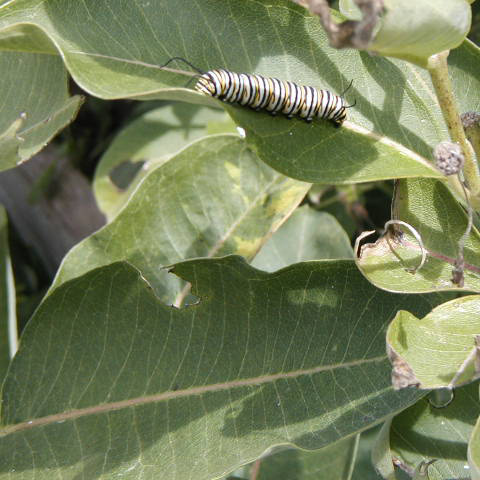 Photo by Anne Okonek.
Photo by Anne Okonek.
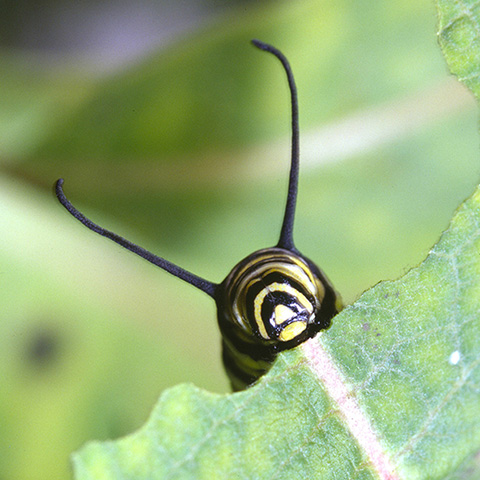 Photo by Mike Higgins.
Photo by Mike Higgins.
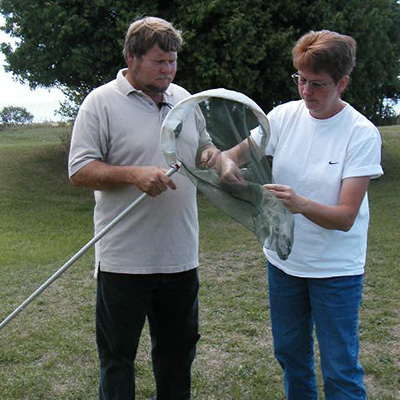 Netted monarch. Photo by Anne Okonek.
Netted monarch. Photo by Anne Okonek.
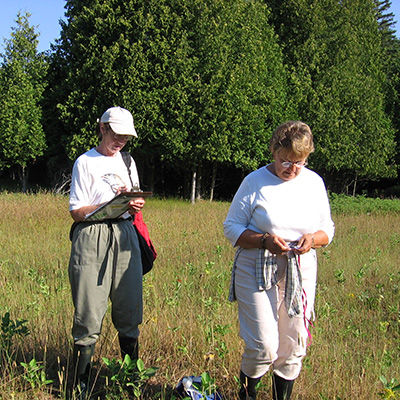 Monarch Larva Monitoring Program volunteers counting the number of monarch eggs and larvae on milkweed. Photo by Janet Ekstrum.
Monarch Larva Monitoring Program volunteers counting the number of monarch eggs and larvae on milkweed. Photo by Janet Ekstrum.
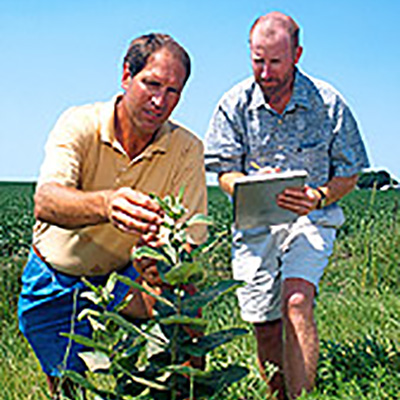 Researchers inspecting a milkweed plant. Photo by USDA.
Researchers inspecting a milkweed plant. Photo by USDA.
Monarch Watch
Monarch Watch is a citizen-science project based at the Kansas Biological Survey, University of Kansas. This project involves volunteers across the United States and Canada who tag individual butterflies to assist scientists in studying and monitoring monarch populations and the fall migration. The tagging program helps answer questions about the geographic origins of monarchs that reach Mexico, the timing and pace of the migration, mortality during migration, and changes in geographic distribution.
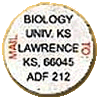
Monarch tags are tiny, round stickers made of polypropylene. They are 9mm in diameter, a little larger than a hole-punch, and account for about 2 percent of a butterfly’s weight.
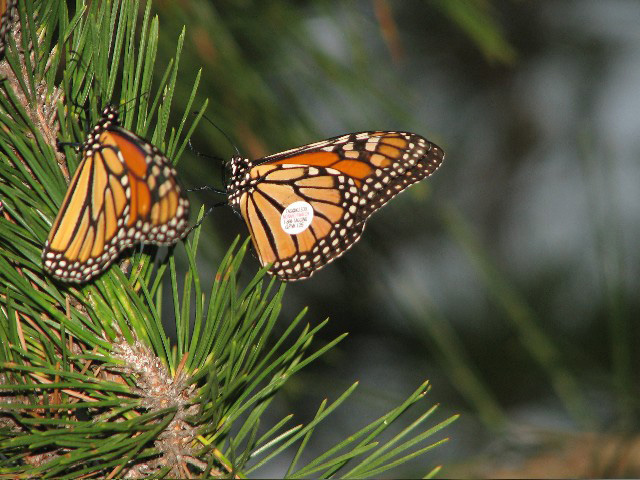 A tagged Monarch. Photo by Mark Garland.
A tagged Monarch. Photo by Mark Garland.
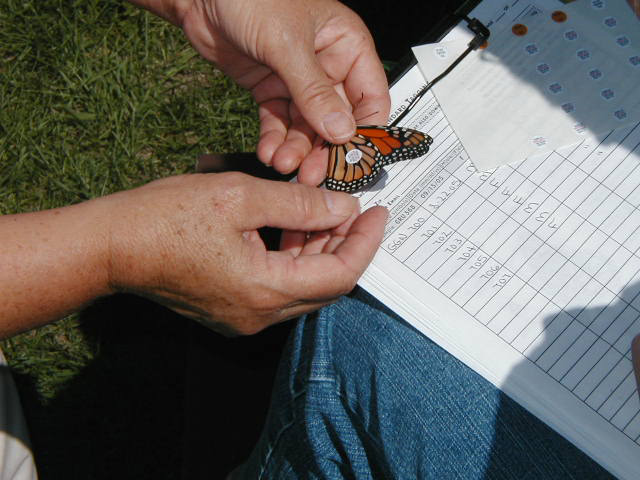 Recording data for a tagged Monarch. Photo by Anne Okonek.
Recording data for a tagged Monarch. Photo by Anne Okonek.
During the fall monarch migration, monarchs congregate at several shoreline locations in North America, waiting for a gentle northerly breeze to help carry them across open water. Volunteers have been monitoring monarchs for over ten years at Peninsula Point in Michigan, Cape May Bird Observatory in New Jersey and Chincoteague National Wildlife Refuge in Virginia.
In addition to tagging and migration monitoring, Monarch Watch has begun a monarch Waystation Program. Waystations are flower gardens or natural areas with milkweeds that act as host plants for monarch larvae and nectar plants that serve as energy sources for adult monarchs.
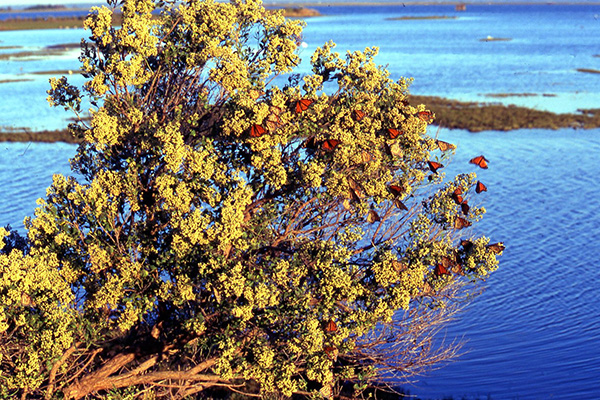 Monarchs bask just after sunrise on groundsel-tree (Baccharis halimifolia) at the edge of Oyster Bay in the Chincoteague National Wildlife Refuge, Virginia, where they roosted for the night. Photo by Denise Gibbs.
Monarchs bask just after sunrise on groundsel-tree (Baccharis halimifolia) at the edge of Oyster Bay in the Chincoteague National Wildlife Refuge, Virginia, where they roosted for the night. Photo by Denise Gibbs.
Journey North
Journey North, a participatory science program of the University of Wisconsin-Madison Arboretum, engages people from across North America in tracking wildlife migration and seasonal change to foster scientific understanding, environmental awareness, and the land ethic.
Project Monarch Health
Researchers at the Institute of Ecology at the University of Georgia are studying monarch health as part of a national citizen-science program. The protozoan parasite, Ophryocystis elektroscirrha, does not affect humans but it can hinder a monarch butterfly’s growth and survival. Volunteers capture live butterflies and collect parasite spores to help scientists map the locations and amounts of parasitism and disease in monarch butterfly populations.
North American Butterfly Association Butterfly Counts
Volunteers in the United States, Canada, and parts of Mexico conduct a one-day census of all butterflies sighted within a 15-mile diameter circle during the annual North American Butterfly Association (NABA) Butterfly Counts. The NABA compiles and publishes the results in annual reports that provide information about the geographical distribution and relative population sizes of the species counted. The information can be used to monitor butterfly populations and study the effects of changes in weather and habitats.
Monitoring Areas
The citizen science monitoring programs includes areas all across North America. There are over 700 monitoring locations participating in the Monarch Larva Monitoring Program in the Eastern United States and Canada. Currently Monarch Watch has over 1,250 Waystations. Their goal is to have a total of 10,000 Waystations over the next three years.
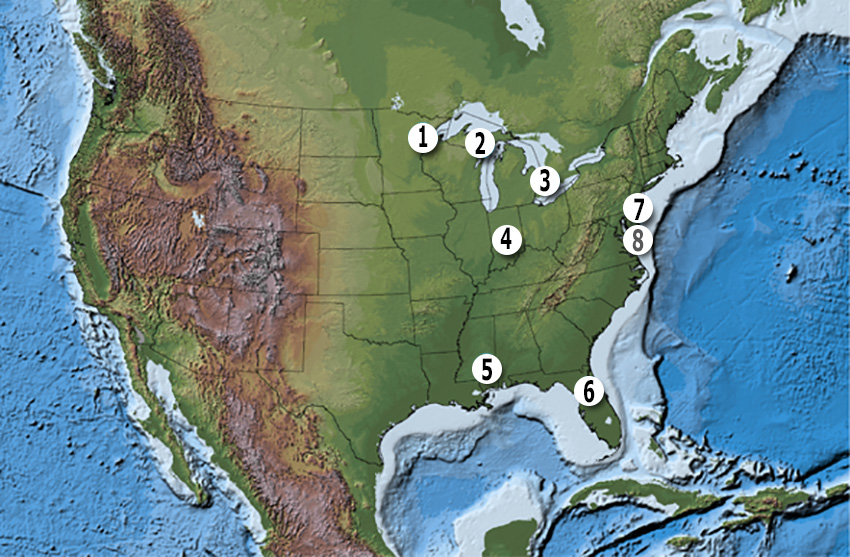 Monarch Butterfly Monitoring Area Locations. Descriptions of these areas follow this map. Base map source: USGS National Atlas.
Monarch Butterfly Monitoring Area Locations. Descriptions of these areas follow this map. Base map source: USGS National Atlas.
- Knowlton Creek Field: Monarch Larva Monitoring Program
Duluth, Minnesota
This site is monitored by North American Butterfly Association (NABA) volunteers. The Northern Crescents Chapter of NABA began monitoring the Knowlton Creek Field site in June 2003. It is a field between the river and railroad tracks accessible by the Western Waterfront trail. This trail follows the St. Louis River in the west part of Duluth for about 5 miles. In addition to larva monitoring, a comparison of milkweed characteristic with and without monarch butterflies has been conducted. - Peninsula Point: Monarch Larva Monitoring Program
Monarch Monitoring Association of North America
Migration Monitoring and Tagging
Rapid River, Michigan
This site operated by volunteers is on the Hiawatha National Forest. The monarch monitoring program was initiated in 1996 to census monarchs as they stopover prior to migrating across Lake Michigan to the Door Peninsula in Wisconsin. Early morning roost counts are followed by two walking census daily along the nature trail around the peninsula from September 1 to October 30
This site also participates in the Monarch Larva Monitoring Program. Two openings with a variety of wildflowers and milkweed are maintained for monarch butterflies. Larva monitoring is conducted once a week starting in early June and continuing into September. Data collected at this site is shared with researchers at several universities. - Holiday Beach Migration Observatory: Monarch Watch Waystation #32
Essex County Ontario
Size: >1,000 square yards
This conservation area was certified as a monarch Waystation in 2005. Holiday Beach and Big Creek Marsh Conservation Area are located at the bottom-end of the migratory funnel created by the lower Great Lakes. Many migrating neotropical migrants and raptors are seen in addition to monarchs. Monarch tagging also occurs at this site. The Park contains common and swamp milkweeds, goldenrod, New England aster and nodding bur marigold. - Perry Meridian High School: Monarch Watch Waystation #19
Indianapolis, Indiana
Size: 100-500 square yards
This Waystation was certified in 2005. It is also part of a National Wildlife Federation certified schoolyard habitat. Goldfinches also frequent the garden. Plants include butterfly weed and zinnias. - Morgan Farm Garden: Monarch Larva Monitoring Program
Laurel, Mississippi
TEXT TO BE ADDED... - Marion County Master Gardeners Butterfly and Hummingbird Garden: Monarch Watch Waystation #51
Ocala, Florida
Size: 50-100 square yards
This demonstration garden was certified as a Waystation in 2005. A recent new section is devoted to milkweeds. This site is also certified by the University of Florida's Florida Backyard Landscapes for Wildlife and the National Wildlife Federation. Plants include tropical milkweed, butterfly weed, lantana, pentas and porterweed. - Cape May Bird Observatory: Monarch Monitoring Association of North America
Monarch Migration Monitoring and Tagging
Cape May, New Jersey
The Cape May monarch project is the longest running monitoring program in the country, beginning in 1992. The Cape May transect route encompasses several different habitats. A driving census is conducted three times daily along a 5-mile loop road from September 1 through October 31. - Chincoteague National Wildlife Refuge: Monarch Monitoring Association of North America
Monarch Migration Monitoring and Tagging
Chincoteague, Virginia
This site is on Assateague Island, a barrier island on the coast of the Delmarva Peninsula. The refuge includes more than 14,000 acres of beach, dunes, marsh, and maritime forest, although the census takes place only in the southern portion of the refuge. Since 1997, a driving census is conducted 3 times a day along a 5 mile loop road for a period of 4 weeks between September 1 and October 31st.

